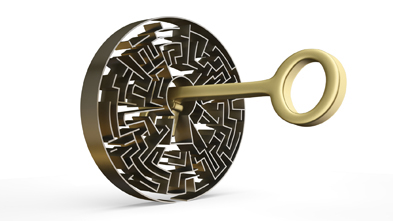
FAQs about psychogenic nonepileptic seizures (PNES)
What can I do to make an episode stop?
We recommend that you start treatment as recommended by your doctor. In the meantime, there are some tools that can help you manage the episodes when they happen. These techniques are NOT a replacement to the treatment for PNES recommended by your doctor.
You may experience some "warning symptoms" before experiencing one of your episodes. The presence of warning symptoms should prompt you to try to do some of these activities that may help prevent further progression of the episode. You may also practice these techniques in the absence of warning symptoms, if there is something that makes you feel you may be going into one of your episodes.
1) First of all, make sure you go to a safe place, where the risk of injury is minimal. For instance, if there are intense movements during your episodes, make sure you sit down or lay down and are away from furniture that your body may hit against and cause an injury.
2)If there are people around you and they get scared, and you realize this is one of your typical episodes, tell them or make a sign to reassure them so that they do not get too alarmed and monitor that you are safe. The main points to communicate to people around you are to:
a) Keep you safe from injury by moving you from an unsafe place or dangerous objects and protect your head by placing soft clothing underneath.
b) Not hold you down.
c) Not put anything in your mouth or give you medication.
d) Speak to you calmly.
e) NOT CALL AN AMBULANCE UNLESS you get injured, the episodes go for longer than usual and/or they look very different from the usual presentation.
You can show people around you a letter explaining what they can do (see next question).
3)Distraction: if you can learn to focus on something else or distract yourself, this may help. Examples of distraction techniques include:
a) Count backwards from 100 to 0 in sevens, "100, 93, 86, 79" or fours, "100, 96, 92, etc.", or count forward alternating numbers and letters.
b) Pick up a magazine and start reading it.
c) Talk to someone, stay concentrated on the conversation or topic.
d) Try playing a computer game on a cell phone or some other device.
e) Try singing your favorite song.
4)Sensory grounding: it is important to practice these techniques also outside of when you are experiencing an episode, so you become proficient at them:
a) Feel something, preferably something rough or textured, with your fingers and thumbs. Really focus on what it feels like. For instance, fold a frozen orange (that you can keep in the freezer) and transfer from hand to hand. As you do this, also put your feet flat on the floor and be aware of the ground solid under your feet. If you are sitting down, be aware of the chair solid underneath you. You can alternate your attention between what you are holding in your hands and other points of contact in your body with the chair, floor, etc.
b) Look around and really focus on the things you can see. Describe them to yourself in detail. You can alternate between two objects, describing one characteristic of each object to yourself and then move your attention to the other object.
c) Listen and see what sounds you can hear, e.g. people talking, birds singing, traffic noise.
d) 3-2-1 technique: alternate between sensory modalities; use any 3 senses and focus on 3, 2 and 1 object for each of them. For instance, touch 3 objects, observe 2 objects and hear one noise.
5) Maintaining attention focus: beyond sensory-driven attention, you may remind yourself where you are, what day of the week it is, what year it is, who you are with, etc. Keep going through this list, alternating with other distraction or sensory grounding techniques.
6) Remind yourself that you are safe.